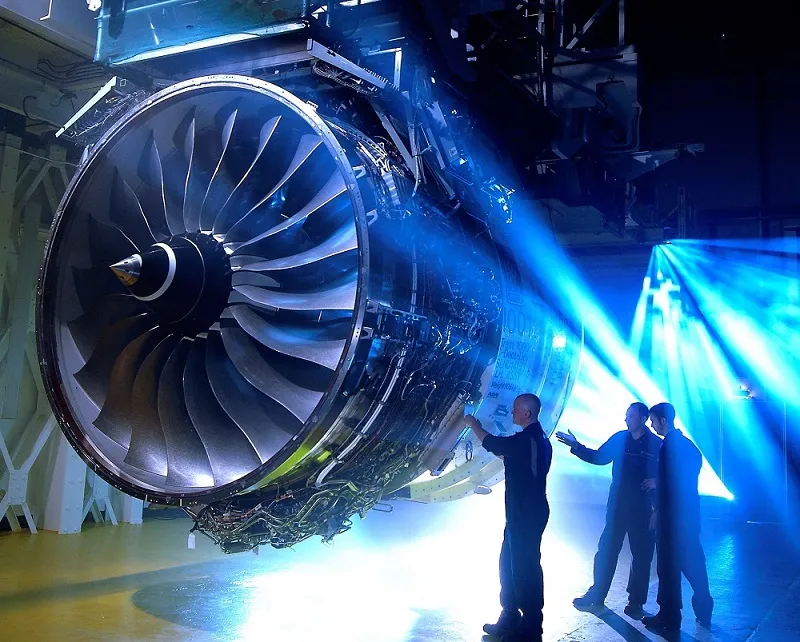
Rolls-Royce engine drama: Light glimmers at the end of the tunnel.
Feb 12, 2019

The Rolls-Royce engine drama has unfolded as the company grapples with significant challenges related to its Trent 1000 engines, which have faced maintenance issues and operational limitations. This situation has led to financial strain and operational disruptions for airlines relying on these engines. However, recent developments suggest that the company is making progress in addressing these problems, with improved maintenance protocols and technological upgrades. As a result, there is a renewed sense of optimism within the industry, hinting at a potential turnaround for Rolls-Royce and its customers, fostering hope for a more stable future.
The recent challenges faced by Rolls-Royce in their engine production have raised significant concerns within the aerospace industry. However, there are indications that the company is navigating through these turbulent times, with light beginning to glimmer at the end of the tunnel. This article delves into the recent developments surrounding Rolls-Royce, highlighting the key aspects of their recovery and future prospects.
Understanding the Rolls-Royce Engine Crisis
Rolls-Royce, known for its high-performance aircraft engines, has faced critical issues over the past few years, particularly with its "Trent 1000" engines. This model has been plagued with reliability concerns, leading to grounded aircraft and significant financial implications. The situation escalated when the company had to manage engine inspections and repairs, which impacted its reputation and operational efficiency.
The Financial Impact
As a result of the engine drama, Rolls-Royce experienced a notable decline in its stock prices and faced increased scrutiny from investors. The estimated costs associated with the engine issues reached billions, affecting not just Rolls-Royce but also airlines relying on their engines. However, financial analysts are beginning to see a turnaround as the company implements strategic measures to mitigate these challenges.
Recovery Strategies in Motion
Rolls-Royce has initiated several recovery strategies aimed at stabilizing its operations and restoring confidence among stakeholders. These strategies include:
- Enhancing quality control measures to ensure that future engines meet rigorous safety and performance standards.
- Investing in research and development to innovate and improve engine technology.
- Collaborating closely with regulatory bodies to expedite the approval processes for modified engine designs.
These proactive steps signal Rolls-Royce's commitment to overcoming the challenges that have beset them and positioning themselves for future growth.
Technological Advancements on the Horizon
One of the most promising aspects of Rolls-Royce's recovery is its focus on "technological advancements". The company is investing heavily in next-generation engine technology, including "sustainable aviation fuels" and hybrid-electric propulsion systems. These innovations are expected to align with global efforts towards reducing carbon emissions and enhancing fuel efficiency.
Rolls-Royce's commitment to sustainability not only addresses current industry demands but also positions them as leaders in the evolving landscape of aerospace engineering. This forward-thinking approach could attract new partnerships and contracts, further enhancing their market position.
Market Reactions and Shareholder Confidence
Recent reports indicate a gradual recovery in investor confidence. The market appears to be responding positively to the strategic initiatives being undertaken by Rolls-Royce. Share prices have seen a modest uptick, reflecting a renewed belief in the company’s potential to rebound from its challenges.
In a recent investor meeting, management outlined their vision for the future, emphasizing the importance of resilience and adaptation in a rapidly changing industry. This transparency has helped to regain trust among shareholders, which is crucial for the company’s long-term success.
Looking Ahead: The Future of Rolls-Royce
The path forward for Rolls-Royce appears promising, contingent upon the successful execution of their recovery strategies. As the aerospace industry gradually rebounds post-COVID-19, demand for reliable and efficient engines is expected to rise. Rolls-Royce is well-positioned to capitalize on this demand, especially with their focus on innovation and sustainability.
Furthermore, the company’s efforts to diversify its product offerings beyond traditional engines could open new revenue streams. By venturing into areas such as "defense" and "urban air mobility", Rolls-Royce can mitigate risks associated with its reliance on commercial aviation.
Conclusion: A Brighter Future Ahead
In conclusion, while the "Rolls-Royce engine drama" has presented significant challenges, the company is making strides towards recovery. With a focus on quality improvement, technological innovation, and shareholder engagement, Rolls-Royce is not only addressing past issues but also paving the way for a sustainable and profitable future. As the industry evolves, the light at the end of the tunnel is becoming increasingly visible, promising a revitalized Rolls-Royce ready to soar to new heights.
| Key Recovery Strategies | Description |
|---|---|
| Quality Control Enhancements | Improving inspection and testing processes to ensure engine reliability. |
| Research and Development Investment | Focusing on innovative technologies for future engine designs. |
| Regulatory Collaboration | Working with authorities to streamline modifications and approvals. |
As we move forward, all eyes will be on Rolls-Royce to see how effectively they can transform challenges into opportunities within the evolving aerospace landscape.
Related Articles

Explore Thailand: The Best Islands to Visit for Paradise, Adventure, and Relaxation

The Ultimate Guide to the Best Islands in Thailand for Your Next Getaway

Do babies need passports? How to get a passport for a newborn

How to get a U.S. passport fast: here’s how to expedite the process

What is Mobile Passport Control: 5 reasons why you should use it

SENTRI vs. Global Entry: A detailed guide

Do you need a passport to go to the Bahamas? Let’s find out

Do you need a passport to go to Mexico? A detailed guide

Do you need a passport to go to Canada? We got the answer

Do You Need a Passport for a Cruise: An Essential Travel Guide

Booster Seat Requirements: All the Rules to Follow in Your Rental Car

What Are the World’s Most Powerful Passports, and How Does Yours Rank?

How to Take a Passport Photo at Home: A Helpful Guide

You've got to have heart! Southwest's new livery

Your opinion: Should water be free on low cost carriers?

Young women bolder than guys as solo travellers
